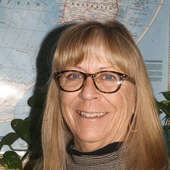- Pete Matz: railroad engineer and singing sensation (3/28/25)
- Historic shift: Women hired at McCook Roundhouse (3/21/25)
- Who were they? Seeking names for these historic snapshots (3/14/25)
- McCook’s government transformed in 1950; city manager form of government adopted and first female councilperson elected (3/7/25)
- Beyond the front lines: Veterans who shaped our communities (2/28/25)
- Civil War stories: The bugler and the drummer (2/21/25)
- Jack Benton: A broadcast trailblazer (2/7/25)
The memoirs of George F. Randel, early settler of Red Willow County
Thursday, September 12, 2024
This comes from a small print booklet written by George F. Randel entitled, Pioneer Happenings in Nebraska. George, who was born in 1853, wrote this memoir in 1939 when he was 86. George passed away in 1950 and is recognized as another of our exceedingly early Red Willow County settlers. I am going to share some of the highlights of his writings.
George was the first of his family born in America, his parents and older siblings having immigrated in 1853 from Germany, settled in Hamilton County, Ohio in 1852 and there is where George was born. A few years later the family moved to Dearborn, Indiana. Though a cooper by trade, George’s father farmed in America but additionally plied his trade by making buckets, barrels, kegs and tubs for many neighbors.
His older brother, Jake, traveled to Nebraska to visit an old friend, John Helm, who had moved his family to Nebraska settling near Kearney. Jake and John traveled to Red Willow County in the fall of ’78 and liked it so much they filed on land near what we know as Red Willow.
George followed in ’79 thinking he would take a look around landing in Kearney which was the west of the Burlington RR. John Helm, his family, Jake and George crossed the Platte river south of Kearney and drove southwest to Devil’s Gap which was near where Holdrege is today. Moving on south the reached the Republican Valley approximately where Arapahoe now sits seeing not more than a half a dozen homes.
George went to Indianola, speaking with a lawyer by the name of Dailey who asked why he didn’t file on a piece of land: “Well, I had just come west to see the country.”, George told him, but Dailey said there was a nice piece of land about 12 miles west of Indianola he thought George would like. Judge Royal Buck came out to show him the land: “Well, it happened to be a piece 80 rods wide and ran from where the paved highway now is to the river and just east of what is now East McCook. It was a nice piece of land and I did not waste much time filing pre-emption rights on it.”
“I broke a little ground on my place in the spring of ’80 and put some of it to potatoes and got a real good crop. The first school between Red Willow to Culbertson, was built the fall of ’79 just north of Ravenswood Road, about three-quarters of a mile east of Sam Klein’s store. Scott Eaton was the first teacher, then Ada Buck and I. T. Birdsell, the third. The school consisted of the McManigal family, who owned the quarter where the round house and depot are, running up to where C street is now: the Smiths who had what is the Newkirk place, the Killers, just west: Hamiltons, Bill Doyles, the Johnsons, who lived on the bottom southeast of the Stillman home, and possibly some others. This was also the location of the first Sunday school between Red Willow and Culbertson.”
“On July 2nd, 1880, I started for North Platte to pay up on my pre-emption. I had to go north from Indianola, as that was the only trail then. Got over near the Medicine Creek southwest of Stockville when an awful rainstorm came up and I and my bedding got soaked. I had passed a ranch a little while before the rain hit, so I drove back and asked to stay all night. But when I saw the people, I hardly knew if I wanted to stay for I had $250 with me, and the people at the ranch were one man and two squaws, and did they look tough!”
Next week I will continue George’s story, his marriage, and following contributions to Red Willow County.

